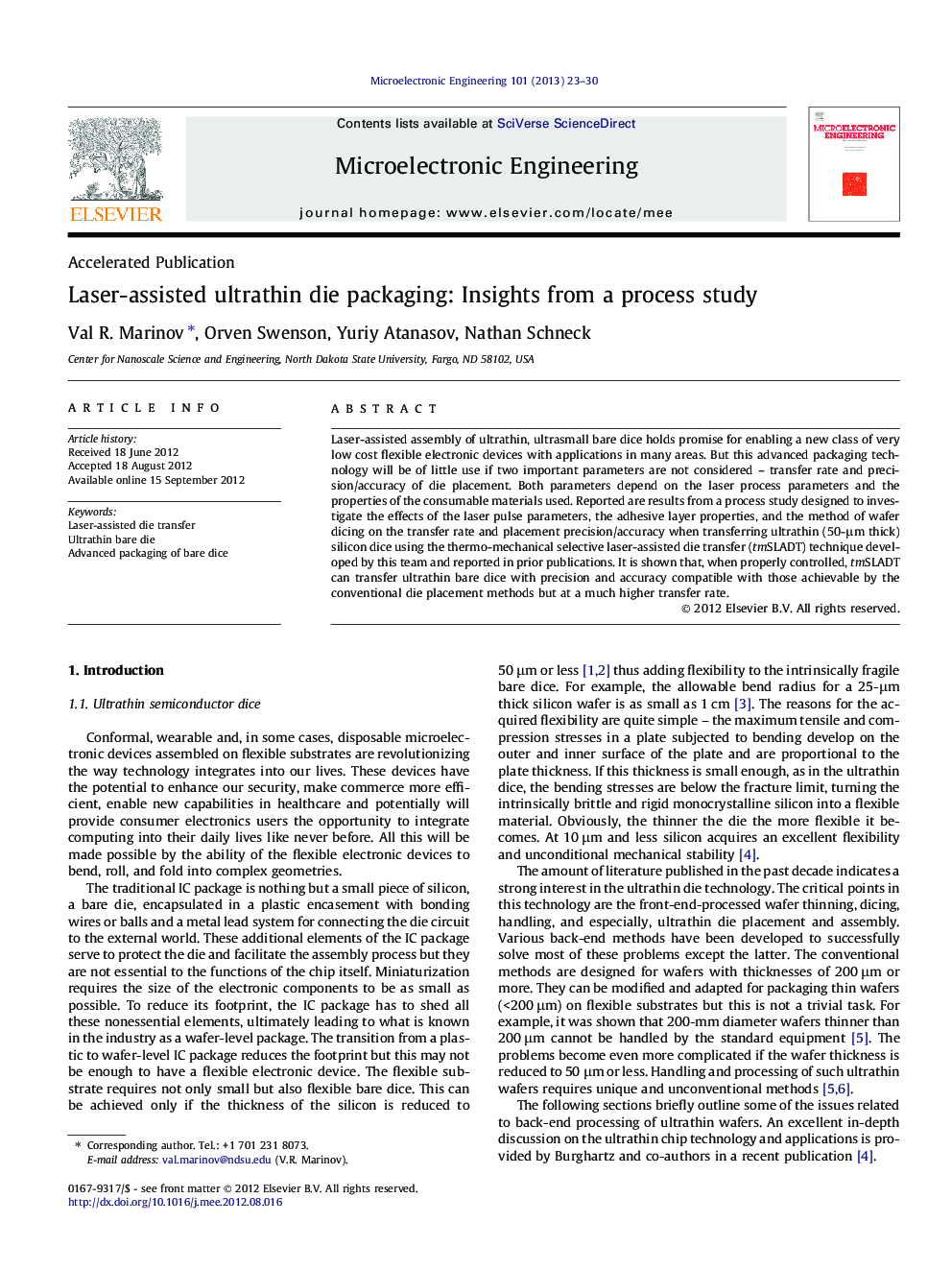| Article ID | Journal | Published Year | Pages | File Type |
|---|---|---|---|---|
| 540257 | Microelectronic Engineering | 2013 | 8 Pages |
Laser-assisted assembly of ultrathin, ultrasmall bare dice holds promise for enabling a new class of very low cost flexible electronic devices with applications in many areas. But this advanced packaging technology will be of little use if two important parameters are not considered – transfer rate and precision/accuracy of die placement. Both parameters depend on the laser process parameters and the properties of the consumable materials used. Reported are results from a process study designed to investigate the effects of the laser pulse parameters, the adhesive layer properties, and the method of wafer dicing on the transfer rate and placement precision/accuracy when transferring ultrathin (50-μm thick) silicon dice using the thermo-mechanical selective laser-assisted die transfer (tmSLADT) technique developed by this team and reported in prior publications. It is shown that, when properly controlled, tmSLADT can transfer ultrathin bare dice with precision and accuracy compatible with those achievable by the conventional die placement methods but at a much higher transfer rate.
Graphical abstractFigure optionsDownload full-size imageDownload as PowerPoint slideHighlights► The rate and precision of laser-assisted ultrathin dice transfer are studied. ► Placement precision/accuracy is compatible with these of the conventional methods. ► Placement precision is not affected by the wafer dicing method. ► Transfer rates of RIE-singulated dice are better compared to laser-singulated dice. ► The most important process factor is the nature of laser transfer process.
